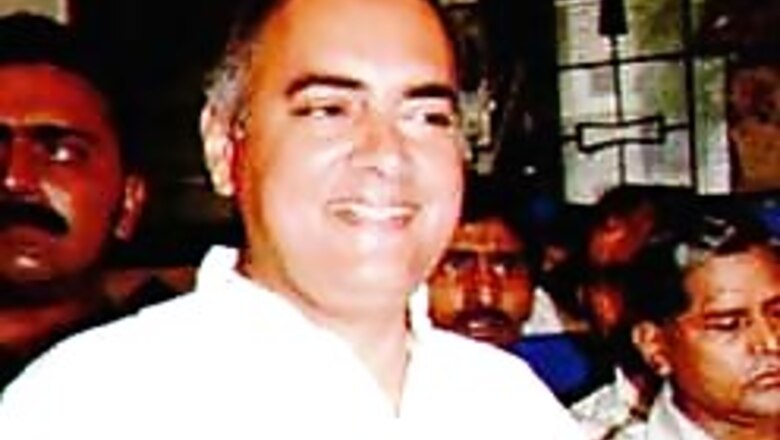
views
New Delhi: A decade after it began probing if there was a conspiracy behind the killing of former prime minister Rajiv Gandhi, an official body tasked with the responsibility is still in the dark.
A multi-disciplinary monitoring agency (MDMA) was formed in 1998 to probe the assassination of Rajiv Gandhi. It has been investigating the alleged role of controversial self-styled godman, Chandraswami, and Sri Lanka's Liberation Tigers of Tamil Eelam (LTTE) in the May 21, 1991 assassination in Tamil Nadu, but has yet to come up with any solid leads.
"We have sent letters rogatory (legal letters of request for help or LRs) to various countries, out of which some have responded and some have not," said CBI Spokesman, G Mohanty.
The CBI had probed the Gandhi killing, leading to convictions of those linked to the assassination per se.
However, the MDMA was set up separately to find out if organisations other than the LTTE were involved in the killing.
The MDMA has sent LRs to 27 countries but only six have responded. "This lack of cooperation is impeding the probe into the conspiracy angle," Mohanty added.
"All the investigations have to be done by the countries to which LRs have been sent. We can proceed only after the responses come from them," he stated.
The LRs relate to Chandraswami's links with the now defunct Bank of Credit and Commerce International, where a senior LTTE operative — Kumaran Padmanabhan alias KP — operated accounts. KP is considered the supplier of arms and ammunition to the LTTE.
Also being probed are Chandraswami's alleged connections with the CIA and Israel's Mossad and the role of 21 "suspects" who were not charged for the killing.
Unwilling to reveal more details, Mohanty said, "The investigations are top secret."
The MDMA came into being on the recommendation of Justice Milap Chand Jain, who was appointed in 1991 to head the probe independent of the CBI.
In his nine-volume report presented in 1998, Jain pointed to the need to look into three elements to uncover a possible conspiracy angle behind the killing.
These three aspects form the basis of the LRs the MDMA has sent out.
The MDMA has also dispatched its investigators to various countries but has not unearthed anything.
"We have sent people to Sri Lanka, Malaysia, Canada and Australia, but the end of the tunnel is still far away," an agency official said.
Despite its failure to unravel the mystery shrouding Gandhi's killing, the Government has extended by another year the term of the MDMA that was to expire May 31.
Giving reasons for the delay, one official said the Rajiv Gandhi assassination had a mystery angle — notwithstanding the proven involvement of the LTTE — akin to the killing of US president J F Kennedy and the accident that killed Britain's Princess Diana.
An LTTE human bomber assassinated Rajiv Gandhi, 46, at an election rally at Sriperumbudur near Chennai. Seventeen other people were also killed in the explosion, while 44 more were injured.
A special court set up under the Terrorists and Disruptive Activities (Prevention) Act sentenced 26 accused, including five women, to death in the case. Among them is Nalini, an Indian and the only surviving member of the squad that oversaw the assassination.
Nalini has now sought release from the Vellore jail in Tamil Nadu that she is now lodged in.
When it was constituted, the MDMA had several officials from the CBI, the Directorate of Military Intelligence, the Research and Analysis Wing and the Directorate of Enforcement. It now has a skeletal staff.
















Comments
0 comment